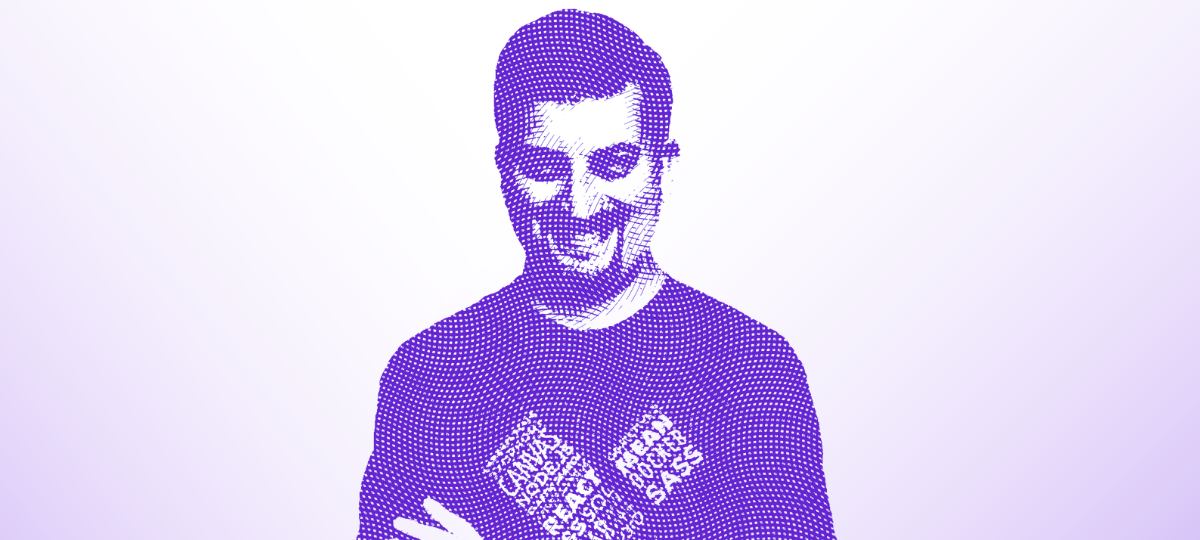Remote Worker Scams: How to Spot and Stop Them
August 7, 2025 7 min read

The candidate looked perfect on paper. They had a strong technical background, excellent English, and reasonable salary expectations. The interview went smoothly.
"We were confident we had properly vetted the person during the video interview," recalls Rohith Reddy, CTO of consulting firm ESB Technologies. "However, after two weeks on the job, we realized the person working wasn't the same individual who had interviewed with us."
Such remote worker scams have become increasingly common and sophisticated. Gone are the days of simple resume exaggerations. Now tech and HR leaders must navigate deepfake job scams and state-backed actors embedding themselves into IT teams.
Here's what you need to know about these sophisticated scams, how to spot the warning signs, and what steps will protect your business when hiring for remote roles.
Why Remote Worker Scams Are Growing
The explosive growth in remote worker fraud isn't happening in a vacuum. Several converging factors have created the perfect conditions for sophisticated employment scams, transforming what had become a relatively simple hiring process into a potential minefield.
A Global Talent Pool Comes With Global Risks
The shift to distributed teams has fundamentally changed how companies think about talent acquisition. Where businesses once hired locally or required relocation, they now routinely source developers, designers, and specialists from around the world.
This expanded talent pool brings tremendous advantages, such as access to specialized skills, cost efficiencies, and 24/7 development cycles. But these distributed job postings also create attack vectors for fraud.
"The sophistication of these scams has grown considerably over the past few years,” Rohith notes.
Lower Barriers to Deception With AI
AI and deepfake technology are enabling fraud in ways that seemed impossible just a few years ago. Video filters can alter appearances, AI can generate realistic voices and deepfake videos that are persuasive enough to pass casual inspection. What once required Hollywood-level production capabilities can now be accomplished with consumer-grade software and a decent internet connection.
"We're using tools that give you all these filters and avatars," says John Rouffas, a cybersecurity adviser for X-Team. "Google Meet, Zoom, and Microsoft Teams all do that, and people use whatever tools are available to obfuscate who they are."
Fraud as a State-Sponsored Operation
Perhaps most concerning is state-sponsored remote worker fraud. These aren't opportunistic individual scammers but rather well-funded, coordinated operations with sophisticated resources and long-term objectives.
Intelligence agencies have uncovered how countries such as North Korea actively target Western companies hiring for remote work. According to Justice Department reports, North Korean IT workers using stolen identities infiltrated Fortune 500 companies, generating hundreds of millions of dollars annually for the regime's weapons programs. In one case, North Korean nationals stole over $900,000 in cryptocurrency.
The implications extend beyond financial loss, however. They include intellectual property theft, industrial espionage, and compromised security systems.
Hiring Without Meeting
The COVID-19 pandemic accelerated the acceptance of purely digital hiring processes, from job applications to onboarding. Where companies once insisted on in-person interviews for senior roles, many now conduct entire recruitment cycles through video calls and digital collaboration tools.
Samuel Van de Velde, CTO of industrial tech company Pozyx, learned the hard way during the pandemic that some candidates are too good to be true.
"A person called 'David Funk' reached out to us through LinkedIn," he recalls. “After several remote interviews, we hired him as a contractor. He seemed like a perfect fit, even though we never saw him in person.”
What followed was an elaborate, months-long deception involving fake deals with major companies such as BMW and DHL, fabricated family emergencies, and even claims of a cancer diagnosis. The fraud only unraveled when another startup revealed they were similarly deceived by the same individual, who turned out to be a professional actor.

How Remote Worker Scams Work
To defend against remote worker fraud, you need to understand the mechanics. Modern scams operate on multiple levels, combining technological sophistication with psychological manipulation to create convincing deceptions that can fool even experienced hiring managers.
Creating a New Identity From Scratch
Most remote worker scams begin with stolen or fabricated identities. Scammers will create elaborate personas, complete with professional histories, educational backgrounds and technical certifications. These personals look legitimate on the surface, often containing personal information or social media links.
Manipulating Interviews in Real Time
Video interviews, once considered a reliable way to verify candidates, have become a primary target for technological deception. The techniques range from simple off-camera coaching to sophisticated deepfake technology that can create false appearances.
“We've encountered candidates who lip-sync during video interviews while someone else provides the actual responses from off-camera,” Rohith says.
Handing the Work Off to Someone Else
Even when fraudsters successfully navigate the interview process, maintaining the deception during the workday is an ongoing challenge. Many outsource their job responsibilities, creating a complex web of subcontractors who are unknown to the hiring company.
"We discovered that work was being outsourced to third parties," Rohith recalls. "We caught this through VPN analysis, which revealed suspicious location patterns that didn't match the employee's supposed work location."

9 Tips to Safeguard Against Remote Worker Scams
Protecting your organization requires a multi-layered approach that combines technology and human judgment. If you’re wondering how to verify remote workers, here are 10 essential steps to strengthen your hiring process.
Verify Identity Beyond Video
Video calls are no longer sufficient for identity verification, and neither is having the candidate’s contact information. Create unique authentication methods that are difficult for would-be fraudsters to circumvent.
"Sometimes it's good to have a phrase that you can share together so that you can ask the candidate to repeat it," John suggests. This technique creates a personal identifier that's nearly impossible for fake remote employees to fabricate or delegate to a third party.
Capture and Validate IP Addresses
Go beyond basic verification. Use tools that highlight candidates' likely physical location and flag potentially suspicious digital activity patterns. Many video platforms will give you this information by default. For example, Zoom's automatic IP logging can provide crucial forensic evidence if fraud is suspected later.
While VPN usage isn't inherently suspicious, unexplained or inconsistent IP addresses warrant additional investigation, especially when combined with other red flags.
Watch for Deepfake Clues
Deepfakes are getting scarily good, but there are still ways to spot them. Subtle facial glitches (such as unnatural blinking or mask-like expressions), inconsistent lighting and shadows, and audio-visual mismatch are among the telltale signs.
John recommends testing candidates with simple physical movements to make fakes more obvious.
"Ask candidates to wave an object in front of the camera or put their hands on their face and take them away," he advises. "The idea is to try and break the deepfake technology and see if there's any blurring around the edges."
Use AI Avatars With Caution
The widespread adoption of digital filters in professional settings creates cover for fraudsters. While avatars can be fun, be cautious about normalizing their use in contexts where you need to know who you’re dealing with, such as during candidate interviews or onboarding.
If a remote worker only uses avatars instead of being on camera, that might not by itself signal fraud, but it’s a warning worth following up on.
Secure Device Management
Implement comprehensive device management protocols that provide visibility into employee use of company resources. Look for signs that devices might be shared or used by unauthorized individuals.
Unusual patterns, such as multiple user profiles, unexpected software installations, or access from unfamiliar locations, can indicate shared and/or unauthorized device use.
Restrict Work to Authorized Tools
Personal accounts and unauthorized tools can create security vulnerabilities and make it easier to hide fraudulent activity. That’s why it’s important to establish clear boundaries. Insist that all work-related communications go through company-managed platforms rather than personal accounts. That way, you can generate audit trails and enforce access controls.
Mandate MFA Everywhere
Multi-factor authentication (MFA) creates additional barriers for anyone looking to commit remote worker scams, especially when fraudsters operate from different locations or use shared credentials. Implement MFA across all platforms accessed by remote workers, including communication tools, project management systems, and development environments.
Require Continuous Security Education
The fraud landscape is evolving rapidly, and yesterday's detection methods may not catch tomorrow's scams. It’s important to keep your hiring team updated on the latest techniques and warning signs.
"I don't think we're far away from significant improvements to voice and video technology, which is going to make it much more difficult," John warns.
Build a Dedicated Security Team
The complexity of modern fraud schemes often exceeds what general hiring managers can handle alone. Consider building dedicated cybersecurity expertise within your organization to stay ahead of evolving threats. Security professionals can help design better verification processes, spot sophisticated scams that others might miss, and respond more effectively when incidents occur.
Understanding cybersecurity job roles can help you build the right team to defend against increasingly sophisticated employment fraud.

What to Do If You Suspect a Remote Worker Scam
If you suspect someone isn’t who they appear to be, you need to act quickly.
Cut off the fraudulent employee’s access immediately. Contact law enforcement authorities, particularly if you suspect state-sponsored activity that violates federal law. In the United States, the FBI Internet Crime Complaint Center (IC3) is responsible for cybercrime and cyber-enabled fraud. You can file a complaint online.
Next, conduct a thorough forensic review of all systems and data the suspected fraudster accessed, checking for unauthorized downloads or evidence of information being transmitted externally.
Finally, review what you can do differently to defend against fake remote employees in the future. Make sure you know how to hire cybersecurity experts who can safeguard your company.
Navigating Remote Hiring Risks, Together
In an age of deepfake interviews and remote work deception, choosing the right hiring partner has never been more important. While no system is foolproof, X-Team’s human-driven X-Team hiring process introduces multiple layers of verification that help reduce the risk of remote worker scams.
Every developer we work with goes through a rigorous selection process—including identity verification, background checks, skill assessments, and cultural-fit evaluations—conducted across several touchpoints. Our long-term relationships, active community, and ongoing engagement make it more difficult for bad actors to thrive.
Discover how X-Team's software development solutions can help you build your team while reducing the risks associated with remote hiring.
TABLE OF CONTENTS



